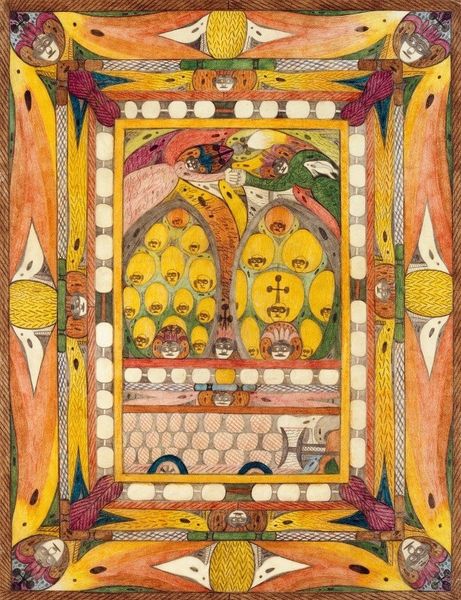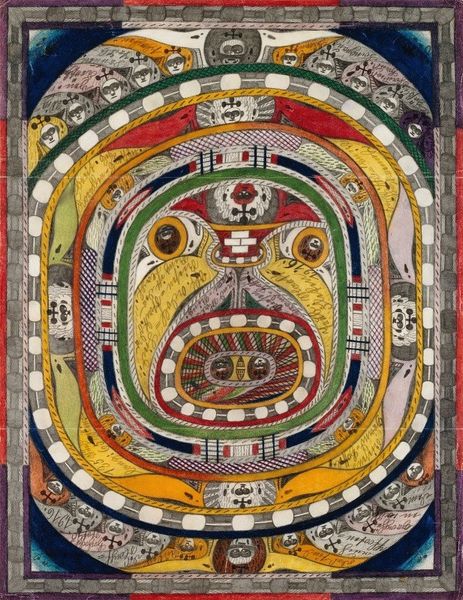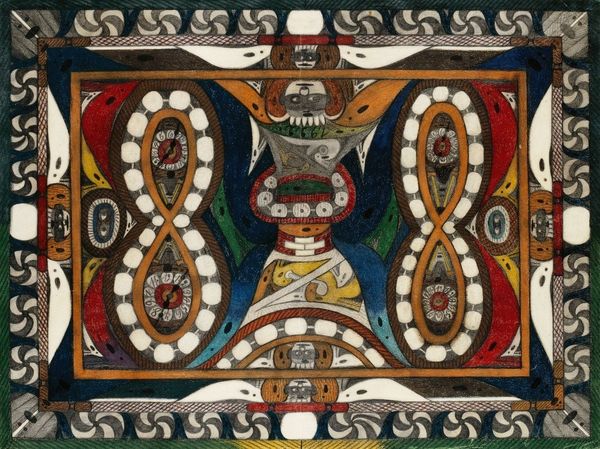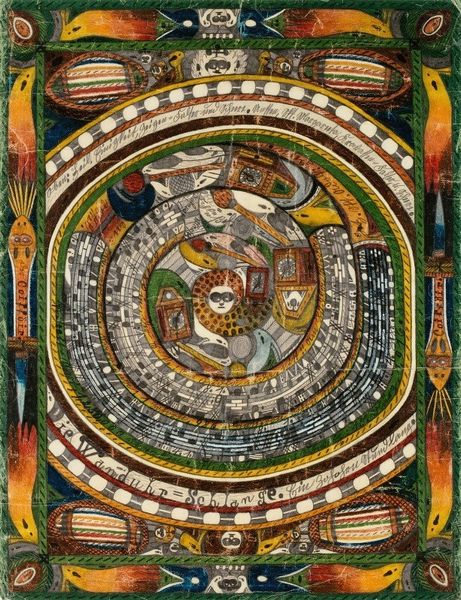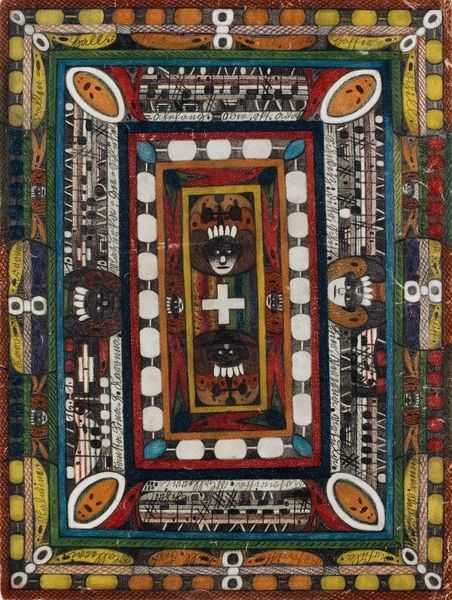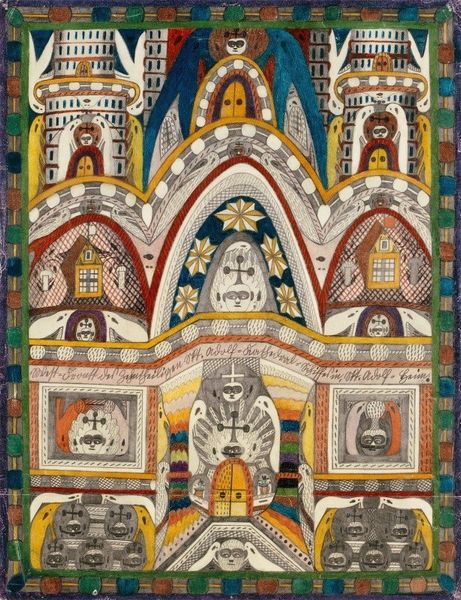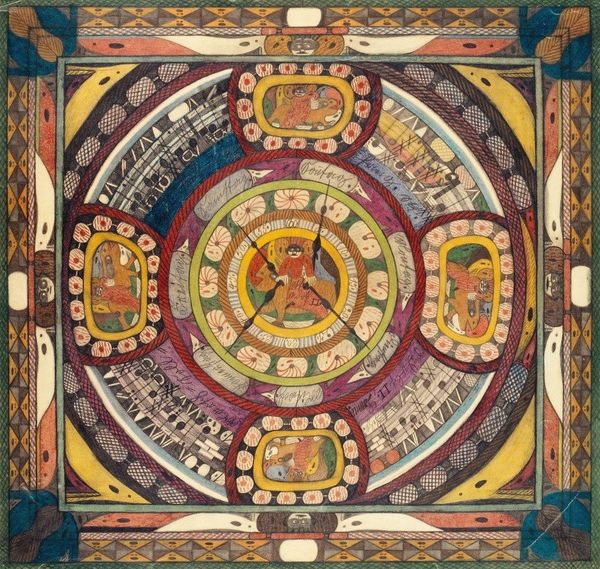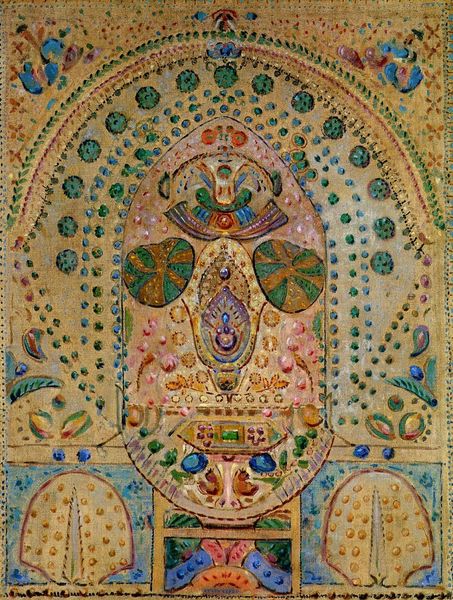
drawing, paper, ink, pen
#
drawing
#
graffiti art
#
stain glass
#
outsider-art
#
paper
#
abstract
#
ink
#
abstract pattern
#
geometric
#
naive art
#
abstraction
#
pen
Copyright: Public Domain: Artvee
Curator: We're looking at Adolf Wölfli’s, "Skt. Adolfina vom Chamäleohn=Thal in China; Aasien," a vibrant ink, pen, and pencil drawing on paper, created in 1919. Editor: Wow, my immediate impression is organised chaos. The color is striking, and it’s bursting with these almost hypnotic geometric patterns. What really catches my eye is the way it teeters between meticulous detail and seeming disarray. Curator: Absolutely. Wölfli’s work emerged from his institutionalization, blurring the lines between personal narrative and social marginalization. As with much of his output, it’s loaded with references—personal mythologies, geographies, mathematical equations, and musical notations—acting as both a shield and a window into his internal world. Editor: I read a profound sense of resilience here. Creating your own system, almost a complete alternate world, within an institution...it's a statement of autonomy. And the fact that "outsider art" often gets othered, when really, isn't all art born of a deeply personal impulse? Curator: Precisely. The ‘outsider’ label carries a heavy history, though—art institutions at that time and to this day continue to reproduce stigma related to mental health. His work wasn’t simply expression; it was labor. It sustained him, composing, drawing, writing and earning what little money he had at his disposal to ease life in the asylum. Editor: And there’s such vulnerability woven into it. Looking closely, you see recurring motifs – stylized faces and abstracted figures– which might reveal coded portraits and relationships. How fascinating that through art, Wölfli asserted himself to us. Curator: This tension between exposure and concealment seems core to the image's complexity. He’s sharing, but always on his own terms. We must acknowledge his institutional setting as pivotal to understanding his output. The system failed him in a multitude of ways. Editor: Seeing art as this radical act of self-definition shifts the gaze. What if instead of pathologizing, we recognize how art can serve as a powerful tool for reclaiming identity in the face of adversity? Curator: It reframes our understanding entirely. The history and experience of marginalisation informs this drawing, so let's see beyond outsider status to view it as a form of potent cultural commentary, and importantly, a document of self-actualisation. Editor: Beautifully said. Wölfli's art is a reminder that sometimes the most groundbreaking voices are the ones society tries to silence.
Comments
No comments
Be the first to comment and join the conversation on the ultimate creative platform.
